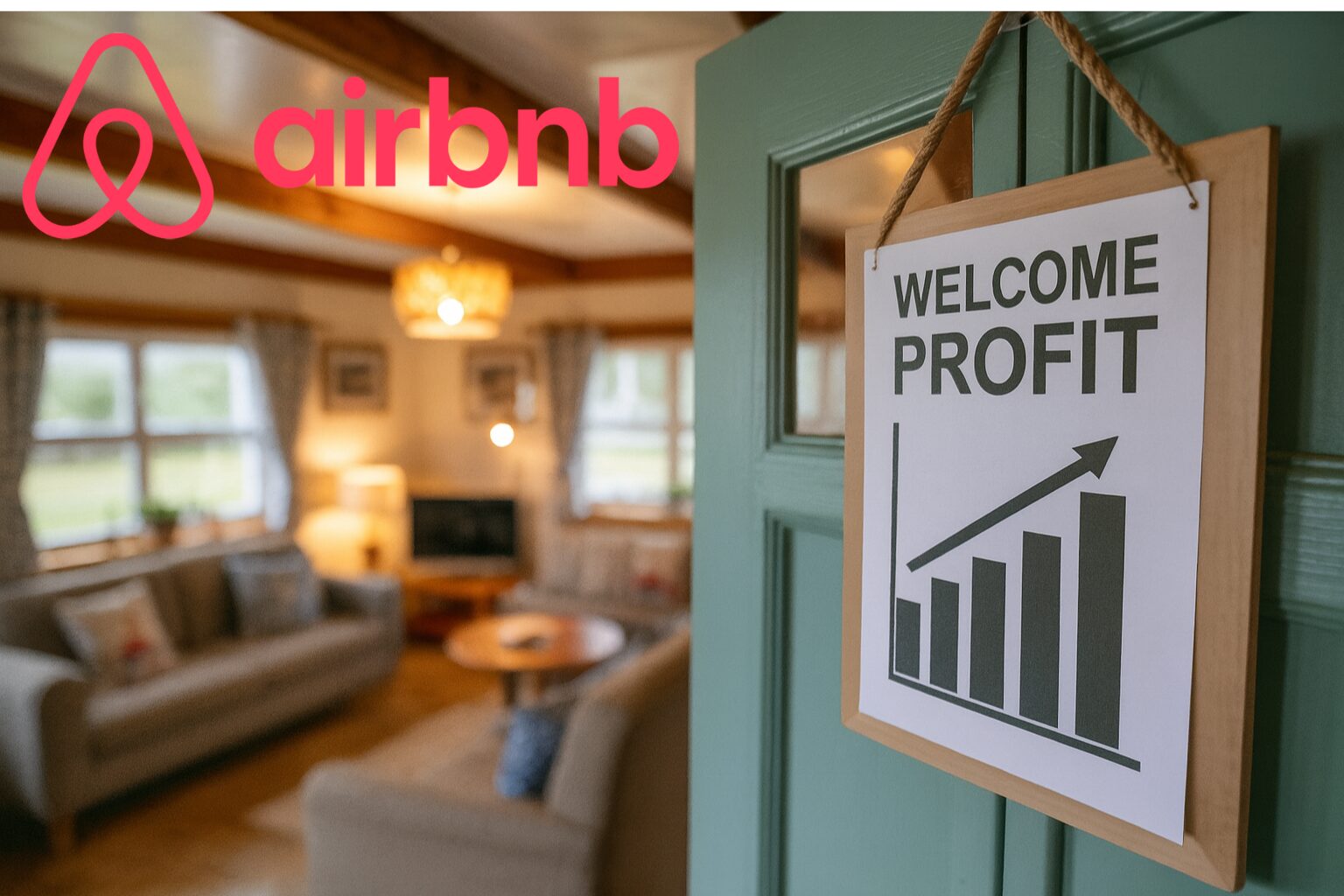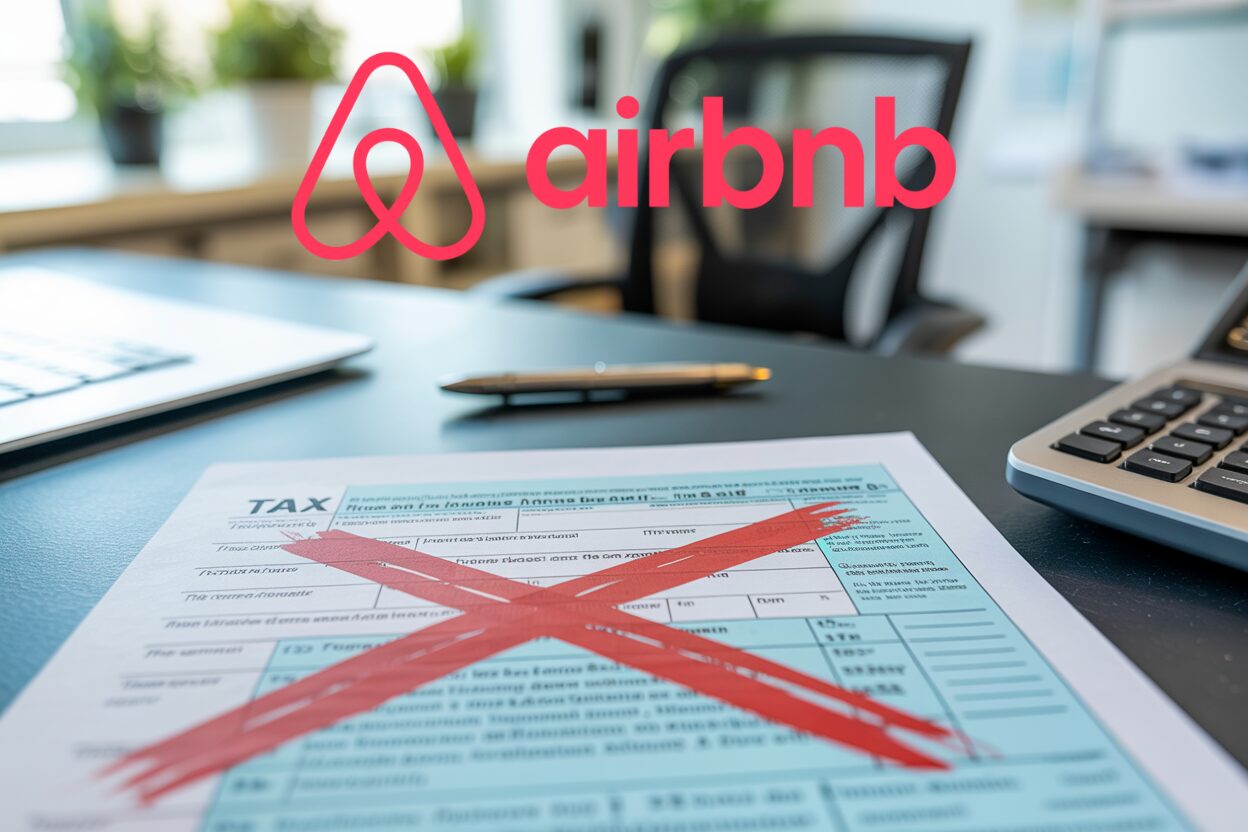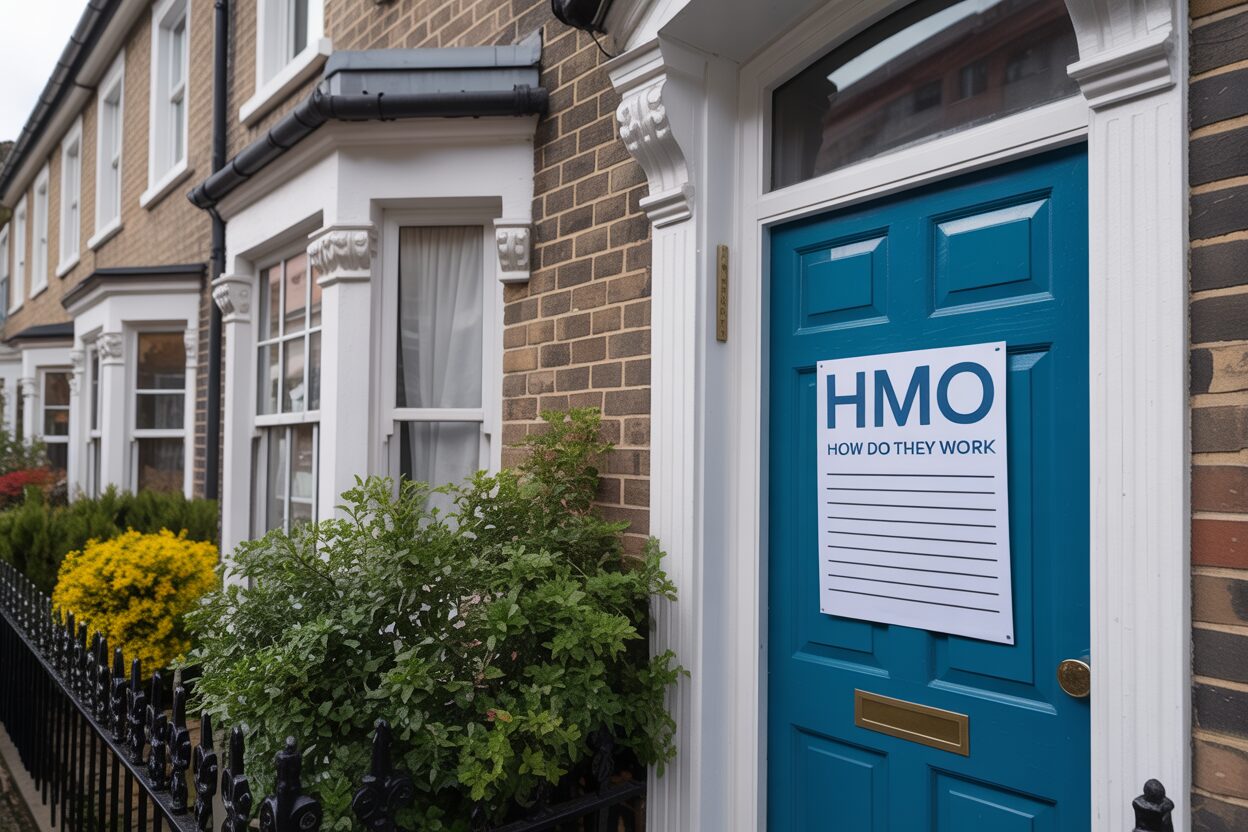
Is owning an Airbnb still profitable? Yes. Here are the figures. The Average Daily Rate of an Airbnb rental property is £311 a night/£3,400 a month, according to Visit Britain. The number of short-term let properties went up 19% to 342,000 as investors sought higher returns.
Get your approach right and the returns from the short-term rental market are high. Holiday lets and Airbnb properties compare very well to HMOs as investment vehicles.
Ryan Windsor, cofounder of HMO Architects, is a seasoned property investor. Starting at the age of 17, he has built his own extensive property portfolio and worked on over 2,200 property projects. We sat down with him to get his insights on how to make Airbnb profitable in a competitive market.
Step one: choosing your target Airbnb guests and location
Choosing the types of guests you target is your most important decision. It influences everything from how much you charge to how often you let your property out. It even governs how much day-to-day work you or your management team need to deal with. Let’s look at four of the most popular audiences Airbnb hosts cater for:
1. Business travellers: consistent weekday demand
Business travellers are a valuable niche for Airbnb property owners. While they account for only six percent of trips, they make up 9% of total guest spend. Market demand among them is greatest between Monday and Thursday.
- Pros: They provide more consistent, year-round cash flow compared to seasonal leisure markets.
- Investor considerations: There is a competitive market chasing this type of traveller. To stand out, invest in a higher-spec property in a major city. This will increase your initial outlay, though.
- Must-haves: Sound insulation, reliable Wi-Fi, desk, black-out blinds and easy, late self-check-in.
2. The long-stay contractor (28+ nights): stable cash flow
The Airbnb platform is full of properties for long-term contractors. Landlords like them because they book for 28 or more nights in a row. This segment accounts for 17% of all gross sales across the site. This mix of traditional renting and holiday letting can be much more profitable than buy-to-lets.
- Pros: Contractors are long-term tenants offering a reliable and higher baseline rental income. Admin costs are lower and there are fewer void periods over the year.
- Investor considerations: This market expects a discount over short-stayers. There is room for this but make sure you charge more per night than standard buy-to-lets. If you don’t, then you’re taking on higher costs and risk for no extra return. Don’t forget to factor in higher utility bill use. Protect your margins with a fair usage cap or asking for an upfront contribution.
- Must-haves: A good kitchen, fast broadband, weekly cleans and a comfortable workspace.
3. The city-break couple: high weekend demand and good pricing
Short breaks in large towns and cities make up 46% of domestic trips. In the U.S., investors target cities like San Francisco. Here in the UK, choose high demand areas like London, Bristol, Manchester or Edinburgh. Your target market rents from you because they want the best a city has to offer. So, you need to make sure your Airbnb property is well-located, stylish, and easy to check into.
- Pros: Ask for and get premium rates with a minimum two-night stay to maximise revenue. Use dynamic pricing to raise rates when there’s a special local event.
Note: Dynamic pricing tools constantly flex your pricing, adjusting your rates according to demand, seasonality and competitor pricing. They do all the work for you, meaning you never leave money on the table by undercharging.
- Investor considerations: Mid-weeks can be very difficult to fill. Carry out market research on a city to find cities that have demand drivers during the week. Opportunities to look out for include a nearby concert venue or exhibition centre.
- Must-haves: Couples see city-breaks as treats to each other. Don’t let them down, so provide them with a stylish king bed, quality shower, hotel-standard finish and nice furnishings. Easy access to local attractions, local businesses and public transport is also essential.
4. The family holiday: peak seasonal premiums and longer bookings
Families deliver some of the best potential earnings in short-term vacation rentals. In the EU, family holidays account for 55% to 60% of gross bookings. Choose less-populated areas like the countryside or resorts close to the beach.
- Pros: Families pay more and stay for longer, making them among the most profitable short term rentals. They also favour quieter spots away from popular tourist destinations. So, your entry costs are less and returns are higher.
- Investor considerations: The highs (Q3) are high but the lows (particularly Q1) are low. There’ll be periods of the year when you make little to no income so cash flow management is key.
- Must-haves: Multiple bedrooms, a child-safe outdoor space and a washer-dryer. Families also like dedicated parking spaces and close-by family attractions like the seaside.
Ryan Windsor’s top 4 tips for selecting your Airbnb investment
Ryan Windsor shares his top four tips in building a successful Airbnb business:
1. Model your property
Use data tools like AirDNA and STR Insights to pinpoint the areas in a town or city you’re interested in. They tell you which properties get the best nightly rates and occupancy rates.
Even a few streets’ difference from a prime area can make a difference. You’ll experience many more void nights and thousands less in annual income.
H3. 2. Model your guest
Run the numbers against at least two different guest profiles. Tick off the pros and cons of each choice.
For example, a family holiday cottage in Cornwall. Pros: impressive summer income. Cons: Long winter voids. It’ll be feast in Summer but famine in Winter.
Or a stylish quayside business apartment in Newcastle. Pros: Stable, year-round income. Cons: Lower nightly rates than couples wanting to treat themselves. You sacrifice peak-season highs for predictable cash flows.
Choose the guest that is more likely to deliver the return you want and fit your risk appetite.
3. Buy the feature others can’t copy
Choose a property with a unique selling proposition (USP). A feature that’s so appealing that a competitor can’t easily replicate.
On the coast, that might be a stunning, unblockable sea view. For countryside lovers, that could be direct access to a walking trail. Or, in a historic city like York or Lincoln, it could be a Grade II* listed cottage. An ancient building in a prime location that captures the history of the city itself.
This is your competitive “moat”. It’s why you can charge premium prices that other Airbnbers couldn’t possibly justify.
4. Analyse a property’s ‘operational drag’
Many Airbnb hosts don’t want to take a hands-on approach to property management. They’d much rather hand it over to an expert. That’s especially true of developers and investors.
There is plenty of support available – we cover that later. Your choice of location makes a difference, though. There are fewer, sometimes no, property managers in rural locations. Finding reliable cleaners and tradespeople in these areas is hard. Your Airbnb will cost more to run and take longer to turn around between stays.
There are lots more property management professionals in larger towns and cities. You get faster turnarounds, easier cover when staff are off and lower call-out costs.
So, before you buy, do an ops check. Get an idea of the cost of managers and cleaners. Make sure they offer same-day turnaround and emergency cover. Ready a backup team in case their performance is poor. And add the costs to your model so you don’t dent your target net profit.
Airbnb regulations you need to be aware of
For U.S. Airbnb investors, zoning laws matter. Here in the UK Airbnb market, there are also regulations you need to take into account. You need to include these in your comprehensive business plan. You should also financially model them to see whether the deal actually makes sense.
Always check national and local rules on short-term lets and licensing. This is how governments and councils treat this type of serviced accommodation:
England
- The previous Sunak government sought consultation on holiday let regulations. They proposed a licensing scheme and national registration of applicable properties. If the law comes into effect, you may need to get planning permission for an Airbnb let.
- To qualify for business rates, your property must be available to let for 140 days. You also need to actually let it for 70 days per year or you’ll pay council tax instead.
- Some councils can charge an additional 100% on council tax payments.
- Special rules apply to entire properties in Greater London that you want let out for more than 90 nights a year. You now need to apply for planning permission.
Scotland
- Every short-term let in Scotland needs a licence.
- In some areas, like Edinburgh, you need planning permission to convert a home into a short-term let.
Wales
- Wales has introduced new planning use classes (C3 for a main home, C5 for a second home and C6 for a short-term let). Certain councils like Gwynedd require planning permission to change use classes.
- To qualify for business rates, your property must be available for 252 days. You also need to actually let it for 182 days per year. Any less and they qualify for local tax.
- Some Welsh councils, like Pembrokeshire, can charge council tax on holiday lets. The maximum uplift is 300%. This also applies to traditional long term rentals if you also used them for holiday lets.
Northern Ireland
- Tourism NI must certify your holiday property before you let it out. Local regulations mean they also inspect your property every four years.
Step two: choosing an Airbnb property type: yield today versus yield and value-add tomorrow
Now you know your location and target market, you need to select a property. Developers and investors have two main choices:
- A ‘turnkey’ property that needs very little work before listing
- A ‘doer-upper’ that requires sometimes extensive renovation
Here’s how the two approaches differ:
Turnkey properties: faster to market
Turnkey properties are ready for Airbnb UK’s listings with minor work needed. Choose a turnkey property for speed to market and predictable income.
Turnkey properties suit developers and investors who are:
- Time poor
- More risk adverse
- Want near immediate income
They also suit first-time or less experienced developers. That’s because they find it harder to borrow money for more complex projects. Get a few success stories behind you and build up a track record to show lenders you can deliver on tougher builds.
There is a downside, though. As it’s in good condition, it’s a de-risked investment. You pay more for it than a property that needs renovation. So, your opportunities to add long-term capital value through refurbishment are much smaller.
Holiday-let mortgages are best for buying turnkey properties. You will need to find a deposit of 25% and 35% of the property’s value. You should also set aside cash for the minor improvements you want to make.
Expect lenders to run an income and credit check on you. They’ll also want proof you can command rents of around 125-145% of the mortgage payments.
Doer-uppers: maximising revenue and capital
A ‘doer-upper’ is a tired or unmodernised property that needs significant renovation.
There are risks to this model. Poor execution can lead to big budget overruns and timeline delays. It will eat into a lot of your time before your Airbnb listing goes live.
But there are two upsides with doer-uppers:
- Your improvements can add significant long-term capital value, upping the future sale price
- A blank canvas you can tailor to your target guest to extract maximum rent
A premium property delivers for you now and in the future in a way a turnkey can’t.
Financing doer-uppers is more complicated. Choose:
- Light refurbishment bridging loans for minor repairs and updates
- Heavy refurbishment bridging loans for properties that need a lot of improvement
- Development loans for conversions, changes of use and extensions
With each of these types of loan, you get cash for buying the property and doing the work. Lenders release build cash tranches to you at different agreed milestones. They’ll send out an independent monitoring surveyor to check on your progress before releasing more money.
When you complete the project, you settle the loan and interest in full in one payment. You can raise the money by selling the property or refinancing with a holiday-let mortgage.
As noted above, lenders are wary to extend more complex loans to newer developers. Newer developers may benefit from working with a broker to find a lender willing to fund their project.
Worked example: a country cottage that’s seen better days
Imagine a country cottage in Northumberland. It costs £350,000 and it’s close to the beach, countryside and Newcastle. It currently rents on Airbnb and its income is £20,000 per annum. It would benefit from improvement and you settle on these three potential options:
| Item | Light refresh | Mid-range upgrade | Luxury upgrade |
| Works done | Paint throughout, new carpets, kitchen front and worktops refresh, bathroom improvements, new lights, deep clean, garden tidy | New mid-range kitchen and bathroom, wood burner, extra loft insulation, new flooring, patio, partial double glazing upgrade, new shelving | New premium kitchen, extra bedroom, spa bathroom, acoustic glazing, underfloor heating, oak floors and joinery, hot tub installation, EV home charger, smart lighting, full landscaping works |
| Upfront cash needed (excl. SDLT and fees) | £115,054 | £136,446 | £199,154 |
| Works costs | £8,500 | £26,000 | £84,000 |
| Time out (no bookings) | 3 weeks | 10 weeks | 16 weeks |
| Finance cost during works (assumed) | £400 | £1,600 | £4,000 |
| Missed income while shut | £1,154 | £3,846 | £6,154 |
| Works phase total | £10,054 | £31,446 | £94,154 |
Following the work, you’re able to raise your rental income by the following amounts:
| Item | Light refresh | Mid-range upgrade | Luxury upgrade |
| Annual uplift on previous £20,000 annual rental | £6,000 | £16,000 | £20,000 |
| Corporation tax on rental uplift (25%) | £1,500 | £4,000 | £5,000 |
| Income (pre operating costs) after | £26,000 | £36,000 | £40,000 |
| Operating costs (20% of income) | £5,200 | £7,200 | £8,000 |
| Interest-only mortgage payment (70% LTV @ 6%) | £15,435 | £16,905 | £19,845 |
| Income after operating & finance costs | £5,365 | £11,895 | £12,155 |
It also has a positive effect on the value of your property, now and in the future:
| Item | Light refresh | Mid-range upgrade | Luxury upgrade |
| Immediate resale price after work is finished | £367,500 (5% uplift) | £402,500 (15% uplift) | £472,500 (35% uplift) |
| 5-year sale price (73%/10y inflation) | £483,371 | £529,406 | £696,325 |
| 10-year sale price (73%/10y inflation) | £635,775 | £696,325 | £817,425 |
| 15-year sale price (73%/10y inflation) | £836,231 | £915,873 | £1,075,155 |
Now, let’s look at each investment over an extended timeline. This is how much profit after Corporation Tax on each approach:
| Item | Light refresh | Mid-range upgrade | Luxury upgrade |
| 5-year “all-in” value gain (rent + sale) after CT | £114,988 | £170,970 | £207,992 |
| 10-year “all-in” value gain (rent + sale) after CT | £251,791 | £356,159 | £429,953 |
| 15-year “all-in” value gain (rent + sale) after CT | £424,633 | £580,280 | £698,251 |
Here are the assumptions in this chart:
- UK prices rose 73% over 10 years (about 5.63% a year). We project the same growth.
- Corporation tax at 25% on the rental uplift and the sale gain (sale price − £350,000 − works phase total).
- CT on rental uplift is used only in the “all-in gains” lines. It isn’t taken off the cash-flow lines.
- Finance during works is a one-off short-term cost shown separately.
- Mortgage after works: mortgage interest-only at 6%, 70% LTV, sized to the post-works value.
- Upfront cash needed: 30% deposit on £350,000 (£105,000) plus the works phase total.
- We exclude SDLT, legal, valuation and arrangement fees, VAT, and detailed running costs beyond the 20% operating-cost line.
This is illustrative only and you should not consider it tax advice. Speak to an accountant about the tax benefits and tax implications of investing in Airbnb property.
Deciding on the right course of action
Each outcome gives very different results. The option you choose should fit your risk profile and how long you want to own the property.
In the case of the above examples:
- A light refresh would work for a new developer or someone with limited cash. Indicative payback on the works cash is about 2.5 years.
- The mid-range upgrade is an efficient five-year choice. It needs £62,708 less upfront than luxury and it delivers payback in about 3 years. Over five years, luxury returns about £37,022 more after tax, but the mid option delivers the stronger return per pound you invest.
- The luxury upgrade delivers the highest totals, no matter the length you hold. Over 15 years, the extra after-tax gain versus the mid-range option is about £117,43. That comes at the cost of about £62,708 more upfront. So you are net £54,723 net ahead after covering the extra capital and taking on the extra risk. You should decide if that trade-off sits within your comfort zone.
Ryan Windsor’s tips on modeling the right deal are:
- Stress-test your numbers: Factor in risk to every scenario. Find out what impact 10% lower occupancy or a 15% renovation budget overrun would have. Be brutally honest as small variations can be the difference between a winning and losing investment.
- Count every cost: Unlike the above examples, including the operating costs. Work out budgets for Airbnb fees, cleaning, laundry, welcome items and guest consumables. These small costs eat into your net profit at every stage.
- Have a back-up plan: Regulations on short-term lets are getting tougher. Choose a property that you could change to a different use class easily. For example, the mid-range option above would suit a family as their primary residence.
[Related article: Converting A Church To An Airbnb? (Innovative Ideas For A Unique Experience)]
Step three: choosing your management model: hands-on or hands-off?
Hands-on Airbnb management is when you do everything yourself. You create the listing, set prices, handle messages, arrange check-in and more. Most developers choose hands-off management. This is when a management company takes over all their duties for a fee. The upside of this is more time to grow your portfolio and income but a hit on your revenues through management fees.
Their goal is a passive investment that delivers steady income, leaving them time to grow their portfolio.
Professional Airbnb management services
There are two types of professional Airbnb management services. Full-service firms act as the “responsible host” on your behalf. They handle all aspects of the operation. In cities and large towns, you normally have a choice of firms. In more rural areas, it’s harder as there are often no local management firms available. This means you have to coordinate cleaners, tradesmen, guests and compliance yourself.
If you do find a full-time agency, their services include:
- Marketing: They create Airbnb listings and profiles including taking high quality photos. These firms also manage your property on multiple platforms like Booking.com. They handle guest communications like enquiries, bookings and problem resolution.
- Competitive pricing: The best firms offer dynamic price tools to boost your Airbnb revenue. They reprice your nightly rate based on market trends, time of year and local events. This means you get more higher-paying guests during peak seasons. They also react to competitor availability and pricing changes in real time.
- Guest management: Airbnb agencies help you deliver exceptional guest experiences. They prioritise guest satisfaction to drive higher repeat booking rates. Their reps also make sure that guests follow your house rules.
- Operations: Agents handle laundry and cleaning fees and forward your utility bills. They’re there to put things right like property damage caused by difficult guests.
Agents are vital for meeting and exceeding guest expectations for hands-off landlords. Instead of viewing it as a con of Airbnb, consider it an investment in your business.
Expect to pay 12% to 25% service fees of your booking revenues plus other charges like:
- Onboard fees
- Per-stay cleaning costs
- Call-out fees
It’s expensive and hits your net income but they help prevent disasters like double bookings. They have ways of mitigating last-minute guest cancellations that leave gaps in your calendar. Plus, if you really want to build a passive portfolio, you shouldn’t be the one dealing with a broken boiler at 22:00 on a Friday night.
HMO Architects: helping Airbnb hosts find the right investment properties
Airbnb is a leading example of the opportunities the sharing economy offers. To get it right, select the right property, zero in on your specific guest preferences and manage costs well. Use the profit from your last investment to build a diverse portfolio and passive income stream.
HMO Architect is not an Airbnb management company. We leave listing details and other operational details to the experts. We’re good at taking property and turning it into desirable Airbnb and holiday let properties, as you can see from our three examples below:
- Anfield Police Station, Liverpool (24 units): We transformed a late-1800s police station from a tired 20-bed HMO into a 24-room, all-en-suite B&B geared to football-weekend demand. We also secured planning and weaving in a ground-floor café concept. This is a great example of event-driven Airbnb properties that can drive revenue. We increased the value of the property from £450,000 to £1.2m and the monthly rent tripled from £7,200 to £21,600.
- Sandylands, Lancaster (7 units): We rebuilt a magnificent six-storey oceanfront terrace as seven coastal holiday-let apartments with layouts and furniture planned to maximise sea views. This is the ideal let for smaller families and couples looking for a romantic getaway. Bringing the building back to life upped its value from £90,000 to £550,000 and resulted in a monthly rent of £5,500.
- Maesteg Road, Swansea (7 units): We turned a sloped five-bed into seven serviced-accommodation rooms, each with an en-suite and in-room kitchenette where possible. Our team also added a lower-ground social zone and two loft bedrooms. Designed for easy management and long-stay demand,the owner benefited from a jump in property value from £85,000 to £260,00 and rent from £350 to £2,500 a month.
The areas we excel in as a business are:
- Investment strategies: Get bespoke advice from Ryan Windsor on how to build and scale your property portfolio. Book your investment strategy call now.
- Project feasibility: Before you invest time or money, get expert clarity on whether your property idea stacks up. Book your pre-buy and design feasibility calls today. Feasibility reports are also available.
- Architectural services: Let our team of architects, with extensive holiday let experience, design layouts that maximise space, guest comfort and rental yield.
- Interior design: Balance aesthetics and durability to create stylish spaces that attract bookings while standing up to heavy guest use.
- On-site management: We can act as your Building Regulations Principal Designer (where required) to keep your holiday let project on track.
- Professional network: Access a range of brokers, lenders, surveyors and other experts to deliver your project on time and within budget.
View our ra ne of development finance case studies to see how we’ve helped clients turn their ideas into sound investments. Read customer stories on HMO, flat, holiday let and housing projects.
Call our experienced team on 01223 776 997 or email us to start your successful Airbnb business.
Ryan Windsor, Development Director and co-founder of HMO Architect, brings over 15 years of specialised experience in HMO development to the table. Having consulted on nearly 2,200 projects, Ryan is a highly seasoned HMO landlord with a vast and influential property network. He began his real estate journey at just 17, rapidly amassing a wealth of experience that sets him apart in the industry. Beyond his professional successes, Ryan is passionately dedicated to giving back, leading numerous charitable initiatives that make a meaningful impact on local communities.




